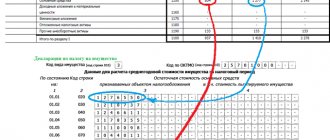An additional issue of shares is one of the ways to raise funds for the development of an enterprise. The procedure is strictly regulated by stock market legislation. The procedure for carrying out an additional issue of shares is prescribed in Art. 19 of Law No. 39-FZ of April 22, 1996 “On the securities market.”
The need to increase the authorized capital may be caused by various reasons. The most common reason is the acquisition of assets that will be used in the activities of the enterprise.
In this article we will analyze the concept and mechanism of additional shares issue: how and in what cases it is carried out, as well as the impact on the income of large and small investors.
What is an additional issue of FPO shares (additional issue)
To understand what an additional share issue is, let’s remember the very concept of an issue. An issue is the release of securities. If a company issues bonds, this is one of the types of lending: the company borrows funds from buyers of securities, pledging to subsequently repurchase the bonds with interest. By placing shares, the company attracts sources of free financing - investor funds. However, it is not entirely free: investors need to pay dividends provided that the company makes a profit at the end of the year.
Primary issue (English IPO - Initial Public Offering - initial public offering) is the process of the initial placement of securities on the stock exchange. Shares can be sold either openly (to everyone) or closed (for a certain circle of people).
An additional issue (FPO – Follow-on Public Offering – next public offering) is the issue of securities in addition to those already available.
For example, the authorized capital of a joint stock company consists of 1000 shares with a par value of 100 rubles. each. Thus, the size of the authorized capital is 100,000 rubles. The Board of Directors decides to increase the authorized capital by 20% through an additional issue. After this, the number of securities will be 1,200, and the size of the authorized capital will be 120,000 rubles.
If a shareholder owns 10 securities, before the procedure his share was 1%. After the additional issue, its share will decrease to 0.833% (10/1200). Of course, this will negatively affect his income and will also likely reduce the market value of the security.
In order to protect the interests of investors, the process of carrying out an additional issue is controlled by the state represented by the Federal Securities Commission (Federal Securities Commission) through an audit, during which the economic justification for the additional issue must be confirmed.
The question immediately arises: is the additional issue of shares good or bad? The answer suggests itself: it’s good for the company, because The procedure will allow you to attract free sources of financing, but for the investor it will be rather bad. Is this so clear? We’ll look into it further.
Issue procedure, state registration and its cost
The issue includes a number of actions:
- The company decides to release.
- The decision is approved by the company's management team.
- The issue is registered with a government agency, and the securities are assigned an identification number.
- Placement of issue papers.
- Providing a report on the results of the issue of shares.
When issuing, many companies enlist the support of a professional participant in the stock market - an underwriter. The issue procedure may require special knowledge and skills, so seeking help from an underwriter is justified. The underwriter receives a fee for his services.
Prices for registering a securities issue vary; on average, the cost of the procedure ranges from 10 to 100 thousand rubles. The final value may vary depending on additional services provided by the legal entity.
Procedure for additional issue of shares
Additional issue of shares is a process that takes place in several stages. Let's look at each one separately.
Deciding on additional release
The decision is made in one of the following ways:
- board of directors;
- by holding a general meeting of participants.
The method of making a decision is fixed in the company's charter. Based on the voting results, a protocol is drawn up, which indicates the following parameters:
- number of securities;
- price;
- placement method;
- payment method.
If the decision on an additional issue is made by the board of directors, then the placement price is determined at market value. For these purposes, appraisal companies are involved.
Approval of the decision made
The decision is approved within six months after adoption. At the same time, an issue prospectus is created. This document contains the characteristics of the securities listed above. The preparation of an additional share issue prospectus is mandatory in the following cases:
- open placement;
- closed subscription with more than 500 participants;
- the amount of the additional issue exceeds 50,000 minimum wages.
The decision approved by the board of directors, as well as the issue prospectus, are sent for state registration.
Registration of the solution
The registration of the additional issue prospectus is carried out by the Central Bank within up to one month. It is possible to submit documents electronically and receive an electronic registration mark.
In preparation for registering an additional share issue, a package of documents is collected, including constituent documents, financial statements, certificates from the Federal Tax Service, etc. In order to save time, you can entrust the procedure to specialized organizations, whose employees will fill out all the necessary forms.
Placement of newly issued shares
The placement occurs in this way: existing investors have a pre-emptive right to purchase; in case of refusal, the securities are sold to everyone.
The placement price is determined according to the following criteria:
- not lower than the book value;
- no higher than the price on the secondary market.
These requirements are established to protect the rights of shareholders. To understand how this works, let's return to our example with conditions:
- total number of papers – 1000 pcs.;
- book value of one share – 100 rubles;
- According to the additional issue, 200 shares with a par value of 100 rubles were issued.
So, the par value of the share is 100 rubles. On the market, papers are sold for 600 rubles. The price of the additional issue should be in this range. Suppose the shares were placed at 550 rubles. for each. Then an investor who owns a block of 20% (200 shares), in order to keep his share unchanged as a percentage, must purchase 40 securities at 200 rubles each, which will cost 22,000 rubles:
1200*20%=240 pcs.
(240-200)*550=22000 rub.
If the securities were placed at a price below par, then the meaning of the additional issue would be lost: the authorized capital would then have no sources of financing. If the placement price is higher than the market price, it will be more profitable for existing shareholders to repurchase shares traded on the stock exchange than to purchase them through an additional issue. This will directly lead to speculation, and as a result, the gap between the offering price and the market value will increase.
Registration of a report on an additional release
After the securities are placed, the Central Bank registers the results of the additional issue. Next you should perform a series of procedures:
- Amendments to the charter.
- Announcement of the closure of the additional share issue.
- Reflection of results in accounting: entries for changes in the amount of authorized capital and the status of settlements with the founders.
Amendments to the charter of the issuing company and their registration
Changes to the charter are also registered in accordance with the established procedure. The issuer applies to the registration authority (FTS), which makes changes to the Unified State Register of Legal Entities (USRLE). After this, the issuer receives a new extract from the Unified State Register of Legal Entities, which reflects the changes made to the charter: the size and structure of capital, the composition of the founders.
How to account for additional shares
In accounting data, changes in the charter capital are reflected at the time of their state registration, and not at the date of the decision to issue shares.
The main wiring will be as follows:
- Dt 51, 50, 10, etc. Kt 75 – financial resources and property were received as payment for additional shares.
- Dt 75 Kt 80 – reflects the increase in the capital as of the state date. registration.
These entries occur if the shares are paid at a price equal to their par value.
If the share price exceeds the par value, the share premium is reflected by posting Dt 75 Kt 83-1 . An additional issue of shares does not affect the tax base for income tax or “simplified” tax.
The value of property contributed for shares can be taken into account in income tax expenses. The cost of the property with which they were paid is equal to the documented costs of purchase, acquisition - for citizens or foreign organizations. In addition, the property must be assessed by an independent expert. It is safer to take a smaller amount as income expenses.
If property is contributed by a Russian legal entity, it is valued at its residual value in tax accounting (Article 277, clause 1, clause 2 of the Tax Code of the Russian Federation). If property is paid for shares, then the VAT on it must be restored and, accordingly, accepted for deduction by the other party (Article 251 of the Tax Code of the Russian Federation, clauses 1-3.1).
Briefly
- Shares are issued additionally in order to increase the authorized capital and attract investment. Most often, the placement of shares occurs through the mechanism of open or closed subscription to shares. A limited or unlimited number of persons are given the opportunity to purchase shares for money or after payment with property.
- The general procedure for additional issue and distribution of shares includes registration procedures with the Central Bank of the Russian Federation. It is set out in the “Standards for the Issue of Securities” of the Central Bank of the Russian Federation and in the Federal Law “On JSC”.
- In accounting, the additional issue is reflected after state registration of changes to the charter on accounts 75, 80, 83.
- Additional placement of shares does not lead to an increase in the tax base for income tax. At the same time, the buyer, under certain conditions, can take into account the property paid for the shares as expenses.
How does the additional issue affect the price of shares?
Since the additional issue of shares leads to an increase in their quantity, the supply accordingly increases, causing the price to fall.
Thus, the additional issue of shares of the company leads to a decrease in quotes on the stock exchange. There are two reasons - an increase in supply and a decrease in the yield per security.
The additional issue has the most negative impact on small shareholders. In this regard, the process is controlled by the state.
Legislative regulation
- The decision to conduct an additional share issue is made by the board of directors or the general meeting of shareholders.
- Existing shareholders have a preemptive right to purchase.
- The placement price should be above the face value and slightly below the market value.
- The issuer's obligation to pay dividends on preferred shares issued under an additional issue remains regardless of the financial results of the company.
These norms are contained in the Laws:
- 208-FZ of December 26, 1995 “On joint stock companies” (latest edition);
- 39-FZ of April 22, 1996 “On the securities market” (as amended).
Method of payment for shares
Most often, new shares are paid for in cash. They are transferred to the legal entity’s bank account. Moreover, their cost cannot be lower than the nominal price (Decision of the Arbitration Court of St. Petersburg and Leningrad Region in case No. A56-52046/2013 dated October 16, 2013).
Further, acquirers have the right to pay for shares in machines, materials, buildings, real estate, property or other securities, as well as rights that can be valued in monetary terms. For example, quite often in industrial joint-stock companies such shares are paid for with real estate, administrative buildings, covered warehouses, workshops, workshops, means of production, and so on (Decision of the Arbitration Court of the Sakhalin Region in case No. A59-2709/2017 of September 21, 2017).
In this case, the Board of Directors is obliged to evaluate the things or rights. In addition, a professional appraiser is hired for this procedure, and the value of the property (or rights), determined by the Board of Directors, should not exceed the price recorded in the report of the appraisal company.
And finally - offset of monetary claims. It is also widely used when paying for additional issues. More precisely, the issue itself is often organized specifically to pay off debt. For example, a joint stock company has a debt to a third party. Already in court, the parties reached a settlement agreement: the debtor will increase the authorized capital and issue shares through a closed subscription. In turn, the lender will receive ownership of these shares. Next, a meeting takes place, it decides to issue papers in favor of the creditor and conclude a compensation agreement with him.
By the way, sometimes in such cases litigation occurs between the joint-stock company and some of its owners. For example, one of the shareholders does not agree with the decision of the general meeting. He sues and demands that his decision be declared illegal. In this case, the shareholder requests the application of interim measures in order to prohibit the JSC from executing the decisions of the meeting. And it's good if he wins the case. However, when the arbitration ultimately recognizes the decision of the general meeting as legal, the joint-stock company has the right to file a claim against the intractable owner and demand recovery from him of losses resulting from the freezing of the additional issue. And the court will definitely recover money from the unlucky share owner (Decision of the Arbitration Court of the Saratov Region in case No. A57-19371/2016 dated 03/09/2017).
What does an additional issue of shares lead to?
Let us formulate the consequences of the additional share issue in the table. Positive changes are highlighted in green, negative changes in red:
| For the issuer | For large shareholders | For small shareholders (without voting rights) |
| Raising funds | Dilution of shares in the authorized capital | |
| Increase the authorized capital | Decline in earnings per share | |
| Fall in market value of securities | Opportunity to purchase securities at a price below the market | |
| Decrease in investment attractiveness | Have the opportunity to influence the process by setting the placement price | They have no ability to influence the price |
Additional issue of shares
The very name of this process tells us about its essence. Additional, that is, being an addition to something (Explanatory Dictionary of the Russian Language by S.I. Ozhegov). In this situation, we are talking about shares that are issued in addition to existing securities.
In this way, a joint stock company, as a rule, increases its authorized capital. The goals of this procedure can be very different: to expand the number of owners, to begin the transformation of society, to carry out reforms, to attract funds from third parties, and so on.
What does an additional share issue mean for a private investor?
We have already found out that an additional issue of shares is rather a plus for a large shareholder and a minus for a small one. What should a new investor do who has not previously owned shares of this company and is thinking about buying?
First of all, the obvious should be taken into account: if a company has decided to issue an additional issue, this most likely indicates financial difficulties. And the reason for increasing the authorized capital is not so important - business development or state requirements. If a company attracts funds from outside, it means that at the moment there is not much of its own money.
I would not recommend purchasing securities immediately after placement on the stock exchange. It is known that first you need to calculate earnings per share. To do this, net profit must be divided by the total number of securities. Thanks to this, you will have an approximate idea of how much you are entitled to.
But in order to find out the amount of net profit, you must wait until the financial statements are published. That is, until the beginning of the year following the one in which the additional issue was carried out.
Owners and nominee holders of securities
The question of what a “share” is can be answered in simple words. The definition refers to an option that confirms the right to own a share of the capital of a company. Current legislation establishes procedures for the development and distribution of such documents. The authorized capital of an enterprise consists of the sum of the par values of the issued shares, which certify the fact of depositing money.
The content of the valuable document includes a number of aspects stipulating who has the right to receive part of the company’s profits in the form of dividends. Owners of securities are given the opportunity to participate in the activities of the JSC by electing the management team.
Shareholders have the right to part of the organization's property in the event of liquidation. Option holders have access to preferential purchase of new issues and free disposal (sale, gift, bequest).
The nominal owner represents the interests of the issuer and protects him from possible mistakes. However, he does not have ownership rights. Such holders are depositories and brokers.
Advantages and disadvantages of an additional share issue
An additional issue of shares is one of the financing methods that has both advantages and disadvantages. How can it be useful?
- Free money that can be used to purchase assets, pay off debts, buy shares in a business, and other purposes.
- An increase in the authorized capital, which may be dictated by both changes in legislation and other needs, for example, improving reporting indicators for investors.
- Influx of new shareholders. With the increase in the number of securities, new persons appear claiming a stake in the company. However, this can also have negative consequences.
Negative consequences include:
- Decrease in the price of shares on the stock exchange: an additional issue interrupts the period of holding shares, as they become cheaper.
- The decision to issue additional shares is often made by the majority of majority shareholders, who pursue their own personal interests, which do not always coincide with the interests of the business.
- The appearance of random persons in the management structure of a joint stock company.
- Costs of issuing and registering additional shares.
- The issuer's obligation to pay dividends on preferred shares continues regardless of whether the company operates at a profit.
2.2.2. Issue of shares when increasing the authorized capital.
Added by: Upload Does the published material violate your copyright? Let us know. University: Subject: File: Mikhail Ivanov / Opera. those. and accounting of operations. from the Central Bank / correspondence.doc Downloads: 5 Added: 04/19/2015 Size: 163.84 Kb ☆ 1 2 3 4 5 < Previous Page 6 of 8 6 7 8
The authorized capital can be increased:
- by issuing additional shares or
- by increasing the par value of already issued shares.
This possibility is established by Article 28 of the Federal Law of December 26, 1995 No. 208-FZ “On Joint Stock Companies”, as well as Article 100 of the Civil Code of the Russian Federation.
An example of an additional share issue and its consequences
In 2010, PJSC Rosseti decided to raise capital through an additional issue of shares. Subsequently, several additional issues were carried out. Let us collect in a table data on how the market value of shares changed as a result of additional issues.
| Denomination, rub. | Total number of securities taking into account additional issues, pcs. | Placement price, rub. | Market value, rub. | |
| Before the additional issue (December 2008) | 1,00 | 41 041 753 984 | — | 1,55 |
| May 2010 | 1,00 | 42 964 067 081 | 4,14 | 4,14 |
| November 2011 | 1,00 | 47 871 694 416 | 3,08 | 2,91 |
| December 2012 | 1,00 | 57 247 302 465 | 2,16 | 1,98 |
| June 2013 | 1,00 | 161 078 853 310 | 2,79 | 1,07 |
| October 2015 | 1,00 | 195 995 579 707 | 1,00 | 0,45 |
As you can see, over 7 years the price of securities has decreased by more than 70%. At the same time, the state owns almost 90% of the shares (data for 2021). Thus, the shares of Rosseti PJSC are not of particular interest to private investors.






